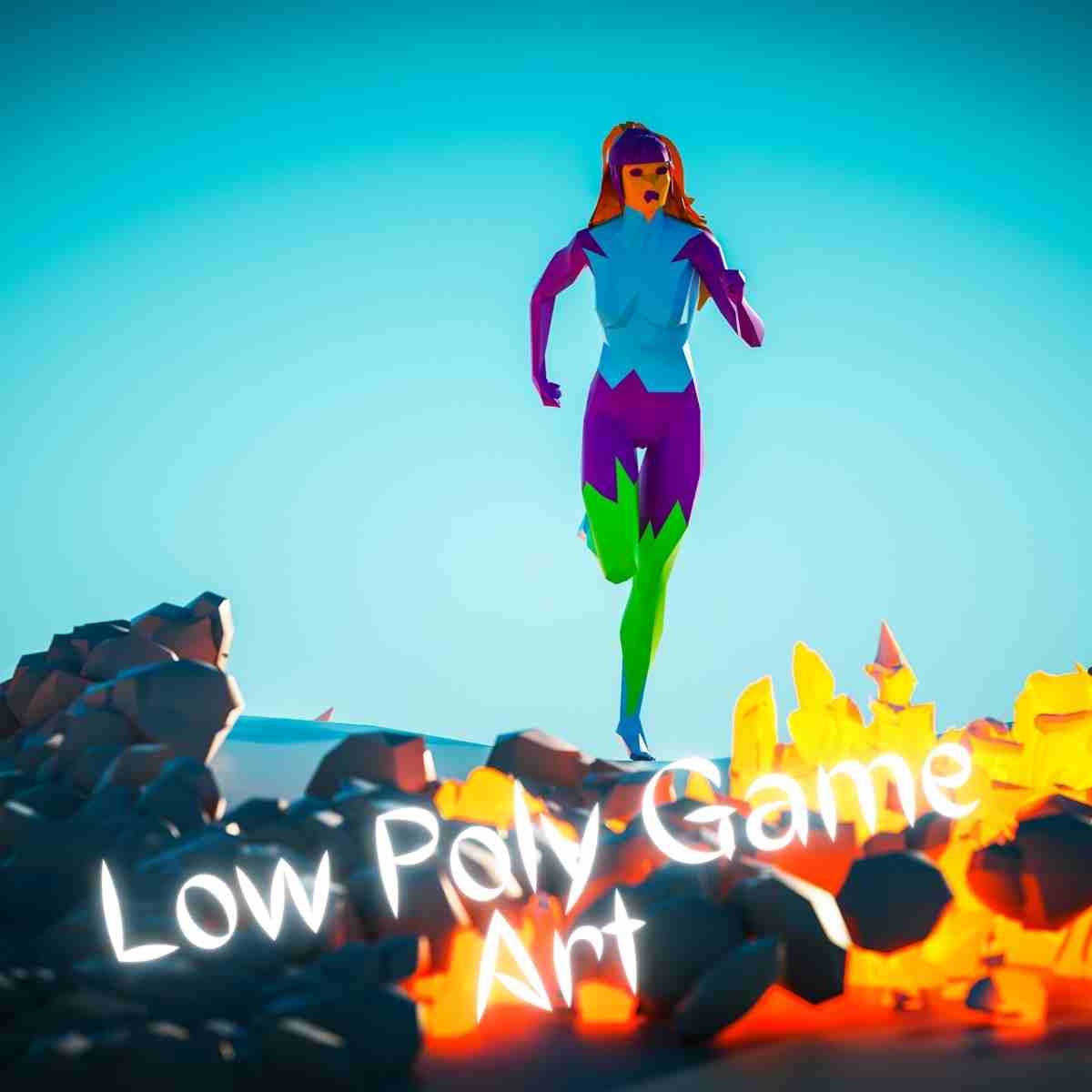Low poly game art is a popular and versatile art form that is used in the creation of both video games and 3D art. Low poly art is characterized by its simple geometric shapes and bold colors, and its minimalistic design makes it a great choice for game developers who want to create a unique and visually appealing experience for their players. In this ultimate guide, we’ll take a closer look at low poly game art, its history, and some of the techniques and tools available to artists who want to create their own low poly game art.

What Is Low Poly Game Art?
Low poly game art is a type of computer-generated art that is made up of simple shapes and bold colors. It is typically used in video games, but can also be used in 3D art projects. The style is characterized by its minimalistic design and its use of basic geometric shapes to create complex images. Low poly game art is often used to create visually appealing experiences for players, and its unique style makes it a great choice for game developers who want to create something unique and memorable.
History of Low Poly Game Art
The history of low poly game art can be traced back to the early days of 3D art. Early 3D art was often created using basic geometric shapes and solid colors, which created a minimalist look that was perfect for creating game environments. With the advent of 3D rendering software and hardware, artists began to explore more complex shapes and textures, which allowed them to create even more detailed and visually appealing art. Low poly game art has been around for decades, and it continues to be a popular choice for game developers who want to create unique and visually appealing experiences for their players.
Techniques and Tools for Low Poly Game Art
Creating low poly game art requires a combination of technical skill and artistic vision. Artists who want to create their own low poly game art must be familiar with 3D software and rendering techniques, as well as how to use basic shapes and colors to create visually appealing images. There are a variety of tools and techniques that can be used to create low poly game art, including 3D modeling software, 3D rendering software, and painting software.
When creating low poly game art, it is important to begin with a basic concept. This can be either a sketch or a basic 3D model. Once the concept is in place, the artist can then begin to add details and elements to the scene, such as textures, lighting, and color. Depending on the complexity of the scene, the artist may need to use a variety of tools and techniques to achieve the desired result.
When it comes to rendering low poly game art, there are several different methods that can be used. The most common method is ray tracing, which uses light rays to create realistic images. Ray tracing is often used to create lighting and shadows, and can also be used to create reflections and refractions. Another popular method is rasterization, which uses pixels to create the image. Rasterization can be used to create textures and details, and is often used to create more complex images.
Conclusion
Low poly game art is a popular and versatile art form that is used in the creation of both video games and 3D art. Low poly art is characterized by its simple geometric shapes and bold colors, and its minimalistic design makes it a great choice for game developers who want to create a unique and visually appealing experience for their players. In this ultimate guide, we’ve taken a look at the history of low poly game art, the techniques and tools available to artists, and some tips for creating your own low poly game art. With the right tools and techniques, you can create stunning low poly game art that is sure to impress your players.
